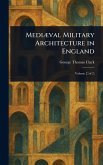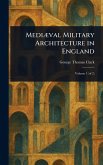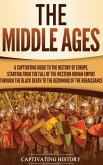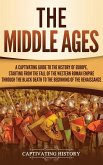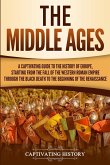Explore the formidable world of medieval fortifications with "Military Architecture in England During the Middle Ages" by Alexander Hamilton Thompson. This meticulously prepared republication delves into the construction, design, and strategic importance of castles and other defensive structures across England during the Middle Ages. Journey through the historical landscape of medieval England and examine the architectural marvels that defined warfare and shaped the social order. From imposing keeps to intricate curtain walls, this work analyzes the evolution of military architecture and its impact on the era. Learn about the principles of medieval fortification, the materials used in construction, and the innovative techniques employed by builders. Perfect for enthusiasts of medieval history, architecture, and military technology, this book offers a detailed and engaging exploration of England's enduring legacy of medieval fortifications. A timeless resource for understanding the architectural and historical context of these impressive structures. This work has been selected by scholars as being culturally important, and is part of the knowledge base of civilization as we know it. This work is in the public domain in the United States of America, and possibly other nations. Within the United States, you may freely copy and distribute this work, as no entity (individual or corporate) has a copyright on the body of the work. Scholars believe, and we concur, that this work is important enough to be preserved, reproduced, and made generally available to the public. We appreciate your support of the preservation process, and thank you for being an important part of keeping this knowledge alive and relevant.
Bitte wählen Sie Ihr Anliegen aus.
Rechnungen
Retourenschein anfordern
Bestellstatus
Storno



